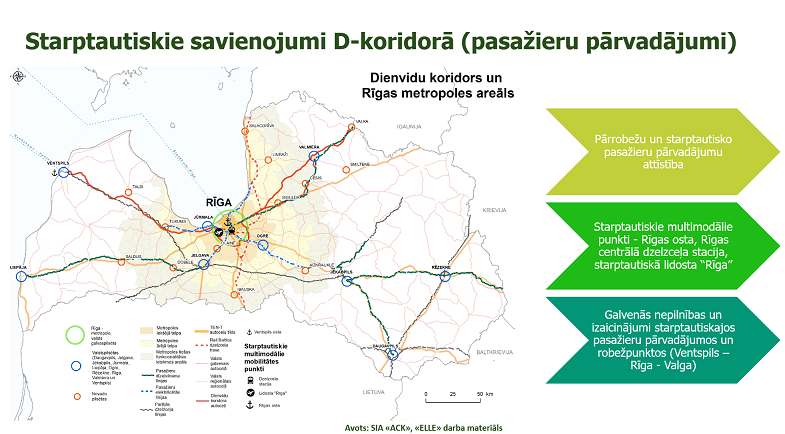Within the framework of the international project “Baltic Loop”, an online co-creation seminar was held on local level mobility in the Riga metropolitan area and connectivity with the southern transport corridor Ventspils – Riga – Valka.
The aim of the seminar was to discuss the current situation and possible solutions for passenger and freight traffic in the corridor, including the Riga metropolitan area, taking into account the need for connectivity between major development centers (in areas along the corridor) and international multimodal mobility points (Riga port, Riga central railway station, Riga International Airport).
Experts agreed that the backbone of regional mobility for both passenger and freight transport should be rail. In passenger transport, one of the challenges right now is how to create efficient mobility points by transferring from one transport to another. For example, in many places of passenger transport, stations are located far from the administrative center, so it is necessary to create an attractive public transport network that complements each other and ensures a convenient and fast flow of passengers. The integrated public transport ticket is an issue that is on the agenda of various planners in order to reduce the flow of private transport in the center of Riga, but at the same time promote the mobility of the population.
Speaking about the circle of the southern transport corridor Ventspils – Riga – Valka seminar experts have pointed out the need to use the railway infrastructure to Ventspils, resuming passenger traffic. It could possibly be further developed for tourism, offering additional trips by sea.
Regarding the flow of passengers around Riga, the experts pointed out the need to consider better accessibility of the airport in terms of public transport with the center of Riga and further to other settlements in Latvia. At present, this is time-consuming and insufficiently addressed. The Freeport of Riga also has poor connections with the railway and the airport. To get from the port to the airport, you have to drive through the center of Riga.
The participants of the co-creation also emphasized the intention of the Rail Baltica project, which is important in the Baltics, to establish 16 regional stations, which means that local governments must be ready to provide adequate infrastructure for mobility.
With regard to freight transport, the seminar participants emphasized a number of areas to be addressed. One of them is to think around Riga about the establishment of new significant logistics centers, which would also promote business and ease the workload of the center of Riga from the flow of trucks. A good example is the logistics center in Salaspils.
There is no easy solution to the question of how to promote the shift of freight from land to rail, which is more environmentally friendly in terms of harmful emissions. One of the contributing factors was the planned electrification of the railway, which was not in the planned direction Riga – Ventspils.


